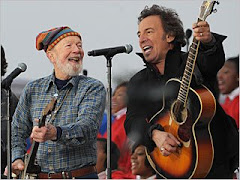Lately I’ve been hearing voices. Again. Voices in my head. But don’t get nervous. The voices aren’t telling me to do bad things. They’re just talking to themselves, or having conversations, and that’s absolutely a good thing. If you write fiction, telling stories that need to be true but need not be factual, you want characters in those stories. You want your characters to talk to each other, so they might as well talk in your head. I draw the line at talking back to these characters, however, especially in public.
On March 7, at the RWA Aloha Chapter meeting, I will be leading a fiction writers workshop on voice. We will be looking at the writer’s voice, the narrator’s voice, and the character’s voice. How do they differ? Do they ever overlap? And how do you find your voice? It’s probably not something you lost, but rather something you discover over time. Years, in fact.
The workshop will include a special section on book design with graphic artist Stephanie Chang, who will talk about imagining your book and matching design with voice. Stephanie and I have been working on the design for my contemporary romance Chasing Cowboys.
If you’re looking for a homework assignment, here’s one. Imagine a young man and a young woman seated at a table. The man appears to be studying a menu. The woman doesn’t have a menu. Is she talking? What is she thinking? There’s a lighted candle on the table, buildings in the background, and stars in the night sky. A romantic setting. So what’s missing? We need voices! Make them talk. You have the characters and the setting. Now write the scene. Give them distinct voices. Give each an agenda perhaps; decide what it is each one wants. First date? Last date? Is there trouble ahead, trouble behind?
In addition to the dialogue, decide on a narrator for this scene. You can go with a third-person narrator, or you may choose one of the two characters to be a first-person narrator.
Finally, try to give the scene these three things: (1) a tantalizing beginning, in the voice of the narrator or one of the characters, perhaps introducing some conflict or tension; (2) a middle in which the characters learn something or change in some way; and (3) a strong ending, a definite resolution. Don’t leave your reader hanging!
When your scene is written, test it. Read the scene aloud. Try reading all the lines of one character, then go back and read all the lines of the other character. This is your chance to fantasize about how the stage and screen lost a great actor the day you decided to become a writer instead. “And the Oscar goes to ...”
Then wake up and rewrite your scene. At some point in this process, listen to your own voice as you tell yourself that you are one creative genius. Just make sure that nobody’s around when you start talking to yourself.














